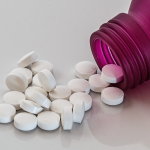The most recent scare by the Environmental Working Group (EWG) over PFAS in freshwater fish was picked up by CNN and all the major news organizations and presented as fact. But the EWG models skew the results. There are other ways that EWG uses deceptive means to reach its conclusions and deliver the scariest outcomes possible.
Harm Reduction
Debunking bad science can be difficult. The misdirection, false assumptions, and biased narratives are often nuanced or built upon a series of citations requiring the debunker to go down the rabbit hole to find the underlying “truth.” Why is it so much harder to counter lies than to tell them?
Every time you walk down a grocery store aisle, you are impacted by one of the most interesting federal regulations, FDA’s Generally Recognized as Safe (GRAS) rule. You might assume that the FDA has tested every ingredient in the food, but the GRAS rule allows the food industry to bring a wide array of substances to the market based on their history as being “generally recognized” as safe.
“Products that can’t be made safe can be banned,” said Commissioner Richard Trumka Jr. Are these words just a moment when Commissioner Trumka “got out in front of his skis?” Or, as others have depicted this, a moment when the mask slipped, and the real agenda was transiently exposed?
Climate change may now be the most cogent global environmental issue of the day. Emissions of greenhouse gases, notably CO2, continue apace, despite angst among environmental groups, and various worldwide governmental goals and pledges. Here I estimate the longitudinal relationships of global mean temperature with population, CO2 emissions, ambient CO2, and gross domestic product (GDP) using 50 years of published annual data.
As a memorial to his beloved dog, a retired home builder began making and giving away dog ramps. My elderly Bedlington terrier was one of the beneficiaries.
If you haven’t already given up on your New Year’s resolutions – clean out sock drawer, organize closets, exercise more, there is one resolution if you have a home water filtration system you need to add and make sure to keep – change the filter every few months (or as recommended by the manufacturer). In this article, I will explain why.
Homicides are on the rise, although not equally across the country. And while firearm violence ending in suicide still exceeds homicides, the toll of homicides in metropolitan areas, especially among Black and Hispanic young males, remains elevated. A recent study provides some novel context.
On April 24, 2002, the Swedish National Food Administration (like our FDA) announced “alarmingly high” levels of acrylamide, a “known carcinogen,” in food. “If what we know from water and animal experiments is true, it could be a very significant cause of cancer in humans. It is not just another food scare.” Put down the chips and those large fries as we travel back to the “Great Potato Chip Scare.”
China’s Zero-COVID policy goes against the central idea of the hygiene hypothesis: that to be the fittest to survive you must be exposed to germs. Could China’s current dilemma be sufficient proof of the need for a sweet spot between filth and sterility?
Vaccination offers the best defense against COVID infection, hospitalization, or death. Effectiveness ranging from about 40% to 90% has been shown in various clinical studies depending upon the predominant variants of the virus, specific vaccines, and selected endpoints. Has vaccination “substantially reduced the burden of disease?”
A series of class action cases claim that Zantac can cause cancer. It is not Zantac per se, but a degradation-produced, N-nitrosodimethylamine (NDMA), which may cause cancer at high doses. What do we know about NDMA?











